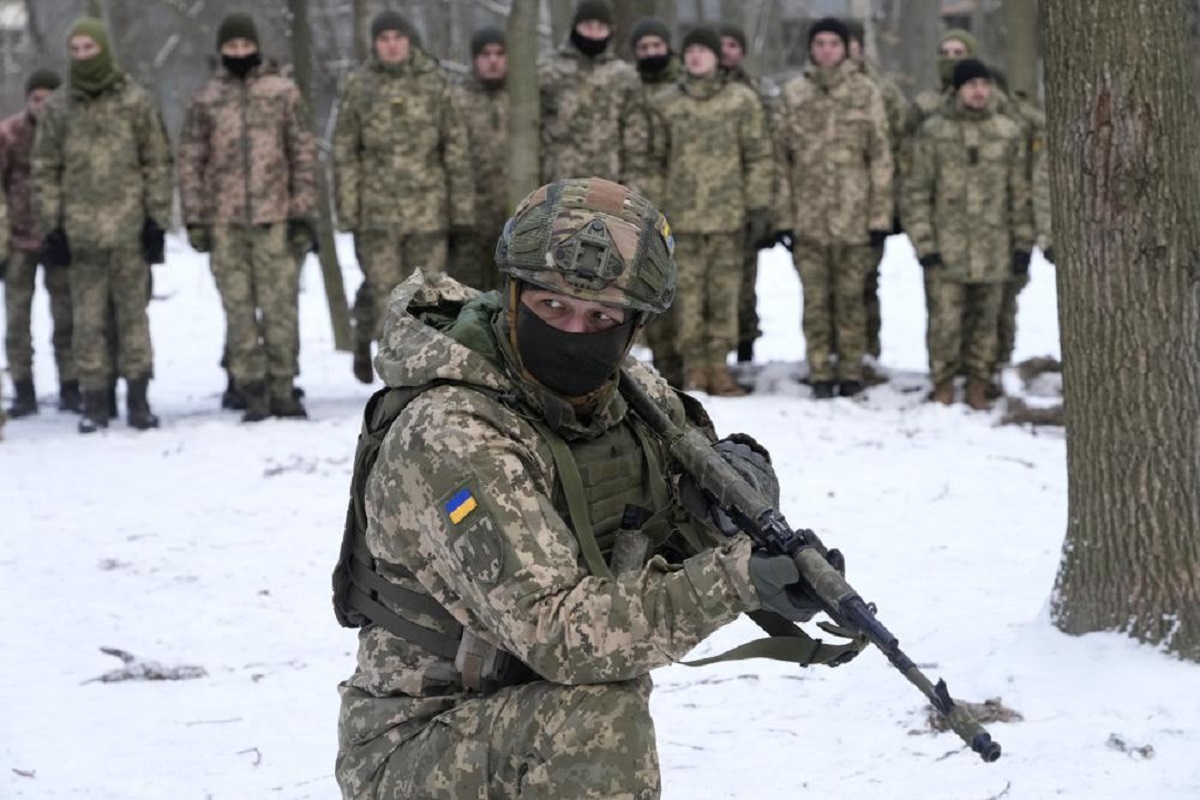The developing security situation in the Indo-Pacific was cited by the US-led Western alliance as the reason for coming out of the Afghan quagmire. This gave rise to hope that the Western alliance would now address the issue of freedom of navigation in the South China Sea about which they have been talking so passionately in recent times after the rise of China.
Other countries like India and Japan that were facing Chinese assertion on their territories hoped that this new move of Western countries led by the US would ease pressure on them. But this was not to happen, and the US-led Nato alliance quickly got embroiled in another crisis in Ukraine. The issue was precipitated by Ukraine’s rigidity on joining Nato.
It is widely believed that Ukraine could not have moved down this path unless it was prodded by the Western nations who in their desire to tame a resurgent Russia unleashed an avoidable conflict in the region. The dissolution of the Soviet Union in 1990 had provided an opportunity for Nato to move eastward even though there was a tacit understanding that Nato would not step into Russian strategic space.
A weak Russia at that time could not do much as it was coming to terms with a new reality. It was unable to address its strategic concerns. This weakness of Russia was exploited by both Nato and China who tried to penetrate areas that were previously seen as the backyard of Russia. In Central Asia a balance was reached whereby Russia was seen as responsible for the security of the region and China was allowed to engage these countries economically.
A similar balance however could not be reached in east Europe where many of the east European countries were part of the Warsaw Pact and the erstwhile Soviet Union. Nato and the EU tried to engage them both economically and militarily. Nato remained dormant for a while after the disintegration of the Soviet Union. Nato members wanted to reap the peace dividend after a long Cold War.
In the West, the disintegration of the Soviet Union was also seen as a victory of the Western Capitalist model over the Soviet Socialist model. In fact, a few years after the end of the Cold War, when some of the former Warsaw Pact countries showed interest in joining the European Union, they were asked to embrace democracy and a market economy.
On this basis, countries in East Europe kept joining the EU and Nato until it reached Ukraine, one of the founding members of the Soviet Union. This country is also geographically adjacent to Russia, the successor state of the Soviet Union. The economic crisis faced by Russia did not allow it to take care of its strategic interests in the aftermath of the disintegration of the Soviet Union. But it remained a major military and nuclear power.
Fortunately, for Russia the US ‘war against terror’ kept Americans bogged down in Afghanistan in the first two decades of this century which delayed Nato’s eastward expansion. The US economy was also sputtering. This made President Trump ask European members of Nato to pay more for their security. This also affected the unity of Nato to an extent.
Nato was largely seen as an organisation that had outlived its utility in matters of European security. The emergence of China, meanwhile, was seen as a threat in the Indo-Pacific. China’s military assertion in the South China Sea and its other bordering areas started posing threats to several countries.
The US and European countries were talking of handling this challenge in the Asia Pacific. Actually, this shift in the geopolitical scene was presented as a major reason behind the US withdrawal from Afghanistan leaving the country in turmoil at the hands of the Taliban. However, if the US and European partners really considered China as a major threat, it becomes difficult to explain the sudden flare-up in Ukraine.
In fact, the way the issue between Russia and Ukraine was allowed to deteriorate clearly shows that the West was more interested in cutting Russia and its ruler Vladimir Putin to size than to deal with Chinese military assertion in the Indo-Pacific. It also gives credence to the view that in Ukraine, the Western countries are fighting a proxy war against Russia. In this war, Russia is directly involved, and the West is providing material and military support to Ukraine. This model suits the West perfectly because even if Russia emerges victorious from this war its economy would be in shambles. It seems that for them a resurgent Russia is a bigger threat than China.
The Western countries led by the US want to create a security architecture in Europe whereby Russia, an erstwhile military and nuclear power, would be a nonentity. This they want to achieve by expanding Nato until the doorstep of Russia. Obviously, this will not be acceptable to a major military power like Russia.
In this exercise Ukraine has been used as a tool. Unfortunately, the Ukrainian leadership by being rigid about joining Nato has only helped to further this agenda. This has brought an avoidable war to the country and the Ukrainian people have paid a heavy price for it. This misstep of the West has only strengthened the position of China in the Indo-Pacific, a threat they claimed they were keen to deal with.
As China is the only major country which can offer an economic lifeline to Russia, the dependence of Moscow on Beijing would further increase. The Ukraine crisis has created a new security situation in Europe which will keep the West engaged in the region for the foreseeable future. This will obviously release the pressure on China. The Ukraine crisis has also created a difficult situation for a number of countries including India who would find it very difficult to take sides. Clearly, the US led Western alliance has overplayed its hand in Ukraine.
The West will now find it difficult to shift their focus to the Indo-Pacific. Western countries think that an insurgency would emerge in Ukraine which would keep Russia bogged down and the situation would be similar to what they faced in Afghanistan. Ukraine might prove to be Afghanistan in a different sense. It will keep the West distracted from giving proper attention to China in the Indo-Pacific. Only time will tell whether the Ukraine war was a planned strategy of the West or a sudden development.
(The writer is Associate Fellow, Manohar Parrikar Institute for Defense Studies and Analyses, New Delhi)










